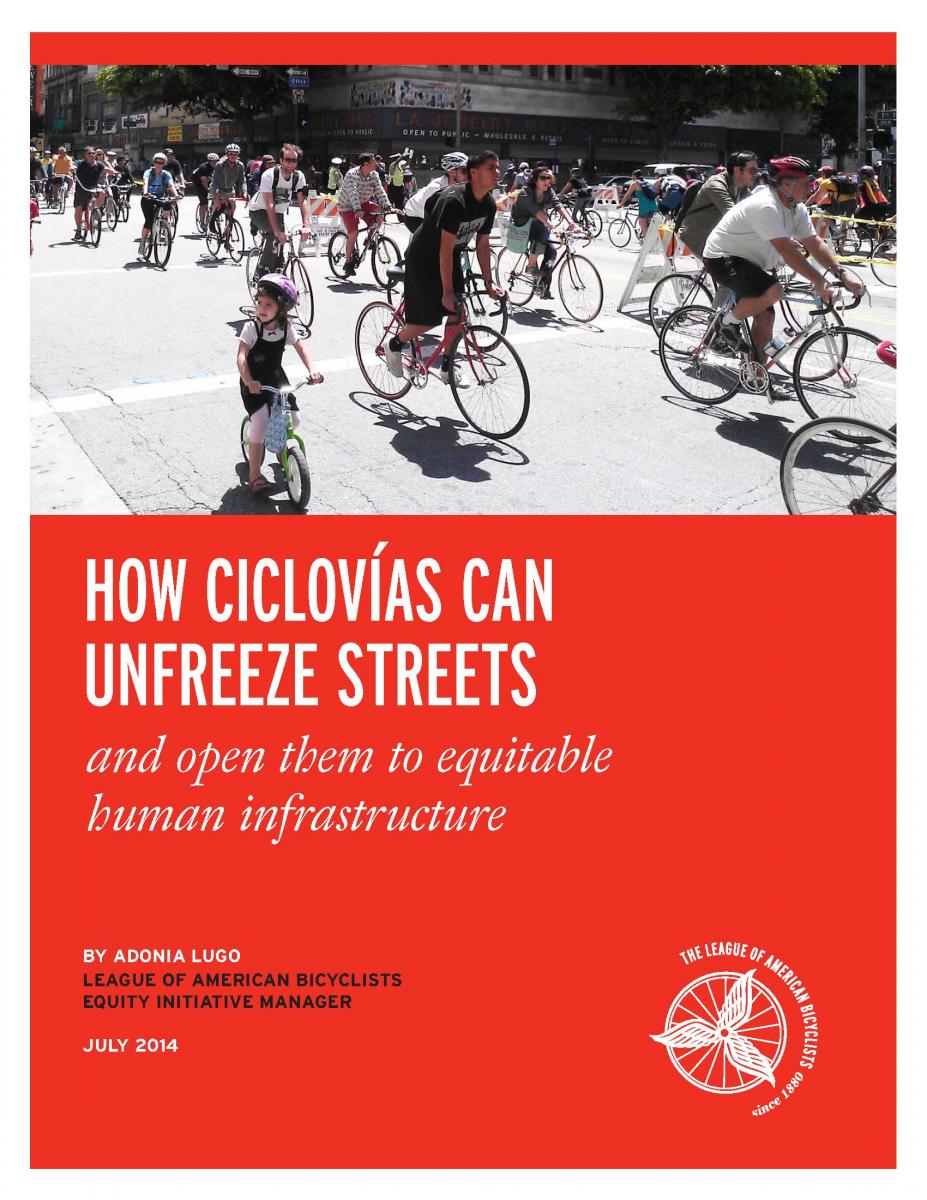DISCOVER YOUR LOCAL BICYCLING COMMUNITY
Find local advocacy groups, bike shops, instructors, clubs, classes and more!
How Ciclovias Can Unfreeze Streets
 Can a temporary street closure have lasting effects on everyday transportation habits? The social psychology concept of “unfreezing” habit suggests that it can, as detailed in a new report on “How Ciclovías Can Unfreeze Streets.”
Can a temporary street closure have lasting effects on everyday transportation habits? The social psychology concept of “unfreezing” habit suggests that it can, as detailed in a new report on “How Ciclovías Can Unfreeze Streets.”
Scholars have found that habit should be taken into account when trying to encourage changes in transportation behavior. Someone who chooses to drive to work every day isn’t making the same decision morning after morning; she might be running on habit. The idea of unfreezing is that by changing the conditions under which that person is making the habitual choice, you might be opening up new possibilities. These other possibilities might have been there all along, but difficult to see through the blinders of routine. This suggests that there is more to changing the street than changing its shape.
This report is based on fieldwork I undertook as an anthropologist studying bicycle advocacy and street culture in Los Angeles from 2008 to 2011. My central project was helping to organize the open street event CicLAvia. I found the ciclovía to be useful for identifying the “human infrastructure” that helps or hinders our work as active transportation change agents.
The human infrastructure perspective directs our eyes toward existing social networks supporting biking and walking, and watches how new networks become a part of the push for better biking and walking streets. This is an experimental approach to measuring change that connects how people use streets with shared ideas about transportation that make it easier or harder to integrate multimodal considerations into policy and planning.
Carl Alviani’s recent post on “Why Bikes Make Smart People Say Dumb Things” pointed to car-related nuisances as well-known and thus ignored, whereas the way bike users show up in streets is still somewhat novel to drivers. He calls ciclovías “powerful bias-breaking tools.” The bias against biking and to a lesser extent walking is deep-seated and complicated in this country, and we expect the ways people travel to reflect their race and class identities. That’s why what some people seem to see when they look at bike users is white privilege rather than cheap transportation. Let’s be real: when has the road ever been for sharing? For many people, the road is something to be ruled, and you’re supposed to rule it from a car.
As frustrating as it is when people dismiss bike users as a nuisance, it is hard to deny that these people may have no firsthand experience of what we are promoting, while they may have plenty of firsthand experience of disempowerment. It’s simple, then, for them to see us as a special interest group trying to manipulate policy and planning to serve ourselves. ACS data showing that many people who walk and bike to work are very low income, as detailed in Brian McKenzie’s recent Census Bureau report, would seem to challenge this special interest perception.
Our contradictory reality is that while biking and walking can be healthy choices, they can also be a response to economic necessity. This means people are walking and biking in places that might not have a high Walk Score or League gold status. Because it calls attention to people rather than places, the human infrastructure perspective includes people who are walking and biking now but aren’t a part of our advocacy conversations. When we focus only on physical infrastructure as what makes biking and walking possible, we keep these people invisible. We lose a valuable opportunity to learn from them. What techniques do they use to navigate hostile environments? How do their visions of walking and biking differ from ours? And, when their economic fortunes improve and they purchase cars, will we lose potential allies?
What the ciclovía model offers is a way to take our mindset, as people who currently walk and bike, and project it onto the much bigger screen of the street. It’s a way to show skeptics what we have in mind; it’s a way to build a human infrastructure for walking and biking that supports active transportation not as a symbol of luxury or privilege, but as a method for creating healthy and civically engaged communities.